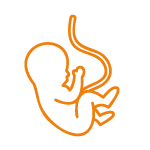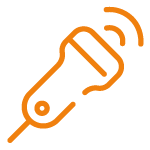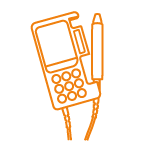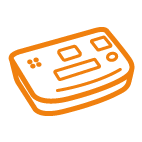Frequently asked questions (FAQs)
Frequently asked questions (FAQs)
At this point we would like to help you with answers to frequently asked questions from the medical field:
As two incisions were made to implant the catheter, a total of two sutures must be removed by a doctor at the implanting clinic or, in individual cases, by the patient’s GP. The skin suture after 7 – 10 days and the retaining suture at the exit point of the catheter only after approx. 30 days.
Yes, but make sure that the dressing around the catheter is completely covered again with the shower foil dressing and that the valve is placed on the compresses under the foil.
There is no time limit for the catheter and it does not usually need to be changed. However, if drainage is no longer possible despite flushing the catheter due to the viscosity of the effusion, if the catheter has been damaged by improper handling or if there is an infection associated with the catheter, the catheter may need to be changed or explanted.
Further reasons for changing or explanting the catheter can be found in the detailed description of explantation.
If the effusion stops during drainage, there may be several reasons for this. The most pleasant reason is that there is no more effusion. If this occurs frequently, a spontaneous pleurodesis may have taken place and the catheter can be explanted. Another reason could be a blockage of the drainage tube caused by a viscous or fibrinous effusion. In this case, you can try to mobilize the blockage by gently “milking” the drainage tube so that the effusion flows again or the catheter must be flushed. You can find out how to flush the catheter here.
The follow-up care of patients after discharge is completely taken over and coordinated by fenik. You can ensure that follow-up care runs smoothly by guaranteeing the following points:
– The patient’s follow-up care at home has been clarified (relatives, nursing service, etc.)
– The discharge prescription has been completed in full, sent to fenik and the original has been given to the patient. The prescription can also be found on our homepage.
– A complete drainage was carried out before discharge
– All drainage systems have been removed from the catheter and the catheter is properly connected
The “medical prescription” form is supplied with every catheter set. If the documents are lost, you can download and print out the form here. You will also find a sample of a completed discharge order here.
If you have any questions about implantation, our sales representatives will be happy to advise you and assist you during implantation. Please contact your responsible sales representative directly or contact us at info.ch@ewimed.com or +4152 577 02 55
If you have any further questions or if the answers described are not suitable, please contact ewimed at info.ch@ewimed.com or +4152 577 02 55. We will be happy to help you.




